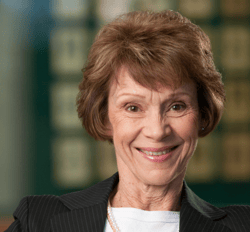
If anyone tells you that he or she can prophesize what your business will be like a year from the day you read this, let alone five years into the future, I wouldn’t bet those numbers on a lottery ticket. The only person I know that had it right was famed Yankees manager, Yogi Berra, when he said: “The future ain’t what it used to be.”
And if I can add a caveat to Yogi’s wisdom, it is that the “future” is changing faster than any of us have ever experienced. Consider these facts:
- The 88+ million people born this year will be born into a data and algorithm world.
- There will be more than 208 Billion devices connected by 2020.
- Information generated and available to us doubles about every two years.
- Half of what students learn in their freshman year in college will be obsolete by the time they are juniors.
- For the first time in history, there are four generations in the workforce and they communicate differently. (Think: write me, call me, email me, text me.)
- We are currently training people for jobs that don’t even exist yet, using technologies that haven’t been invented yet, to solve problems we don’t even know we have yet.
And you want me to tell you what your business will be like in five years? While there is no way I can prophesize that, I can give you three keys to help unlock your future.
- Continually keep your radar up. Make sure your radar is constantly up and working to aggressively monitor what is going on that can directly, or indirectly, affect your business – demographic, social, economic, technological, and political.
- 3-Pete Measurements. Project your business’s three possible outcomes – most likely, worst possible, and best possible. Then attach probability odds to each outcome, depending on the nature and severity of the turbulence, the competition’s response, the projected impact on consumers’ lifestyles, and the impact on your revenues. Finally, develop a strategic plan based on each of the final projected outcomes.
- Backcast the Future. This process begins with defining a future scenario and then working backwards to identify what the business did to arrive at that future. Through this process, some of the psychological barriers that lead to “Well, we can’t do this or that, because…” are reduced. It also encourages more innovative thinking because it decreases the constraints of today’s limitations.
More than a century ago the French philosopher, Paul Valery, said that “The trouble with our times is that the future is not what it used to be.” In fact, former Federal Reserve Chairman Alan Greenspan used the phrase The Age of Turbulence, and Philip Kotler, an authority in strategic business strategy, calls this unprecedented era chaotics. Said another way, pick up your three keys and listen to Yogi Berra.
Your bottom line will thank you!













